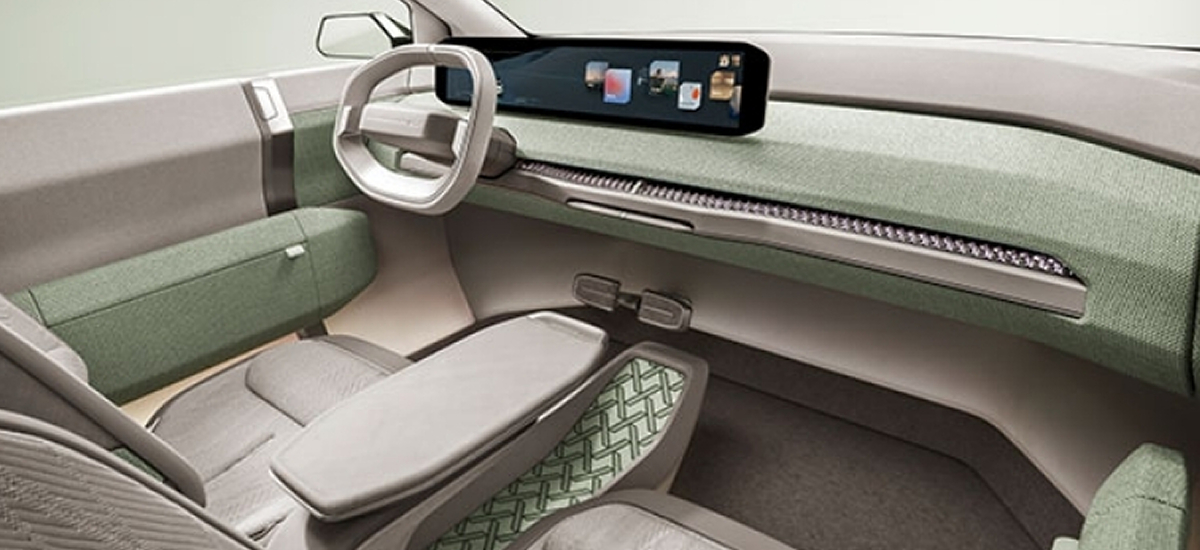
 Your Credit Estimate
Your Credit Estimate
 Your Credit
Your Credit
Your zip code helps us provide you with the most accurate vehicle pricing and vehicle availability.
We estimate your credit score to give you an idea of your monthly payments. To get an accurate payment amount, complete our credit application by clicking the Start Credit Application button below.
start credit application
The Kia Corporation is on a roll with its production of battery-electric vehicles (BEVs). It all started with the Kia EV6, the first all-electric vehicle with no gasoline predecessor from the automaker, and a hatchback crossover no less. Then came the Kia EV9, an all-electric SUV, and we’re very happy the EV9 is coming to the U.S., finally. Not too long after that, the Kia EV5 BEV made an appearance overseas at the Chengdu Motor Show in China, and just last week, we got a look at the Kia EV4 concept. As the automaker moves forward with their Plan S Strategy and electrification of the lineup, they also want to make more sustainable vehicles made from eco-friendly materials, starting with the EV9. Now with the EV3 and EV4 concepts on the rise, we got a good look at the interior design of these concepts and how sustainable they really are.
We didn’t get a whole lot of information about the Kia EV4 at first. At best, it’s a replacement for the Kia Stinger sports car, ending with the Limited Kia Stinger Tribute Edition, and we couldn’t be more excited about it. When it comes to sustainability, Kia is playing its cards close to its current design philosophy “Opposites United”. It’s all about mixing the look of natural elements with man-made constructs, and we see this heavily played on with the EV3 and EV4 concepts.
For the Kia Concept EV3, Kia’s CMF (Color, Materials, Finish) design team took its inspiration from the element of Air. The design is focused around light and transparency, and it all starts with the lightweight seat design, made of fiber structures complemented by soothing natural tones to create a more atmospheric feel for the cabin. Both, the EV3 and EV4 concept use a process called applied 3D Knit technology to create a stunning 3D effect of the cabin while creating a soft surface for the dashboard and center console. Made from zero waste material, the EV3 console table is made from mycelium, a resource that comes from mushroom roots, and was more so grown than constructed. Able to be turned into any shape using a mold, it’s still at the early stages, but Kia is working with other companies to grow the materials used to produce its vehicles in the near future.
The Concept EV4 had a more down-to-earth feeling. Using natural dyes made of madder roots and walnut shells, and applying it to 100-percent recycled cotton, the Kia CMF team took inspiration from the element of Earth. In the end, the team can take advantage of these natural dyes to create a near-endless range of tonalities and hues when coloring the interior of the EV4. The console table for the EV4 uses another naturally-occurring resource to elevate its aesthetic appeal and functionality. This time, its hemp fibers.
“Hemp is a rapidly growing plant that requires minimal resources to cultivate…Not only is it highly sustainable, but it’s also highly moldable too, which means it is a very versatile material to work with, plus it enhances the EV concept’s cabin with its beautiful rich color.” - Marília Biill, Head of CMF Design
Both are grown from the ground, so we’re a little curious why both concepts didn’t draw inspiration from the Earth, but it’s still a definitely different approach when designing a BEV. For its future lineup, Kia has a list of 10 must-have sustainable items, including bioplastic, vegetable oils, corn extract, sawdust, sugarcane, Bio Polyurethane (PU), and now, plant-based components like mushrooms and hemp. We look forward to learning more about these new concepts and hope to see them in the U.S. market. It’s the new future of Kia, and you can always learn more about what the automaker is up to when you follow us on NowCar social media.